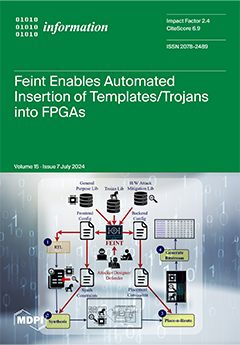A method fusing spectral and image information with a one-dimensional convolutional neural network(1D-CNN) for the detection of moisture content in Orah mandarin (
Citrus reticulata Blanco) was proposed. The 1D-CNN model integrated with three different attention modules (SEAM, ECAM, CBAM) and machine learning
[...] Read more.
A method fusing spectral and image information with a one-dimensional convolutional neural network(1D-CNN) for the detection of moisture content in Orah mandarin (
Citrus reticulata Blanco) was proposed. The 1D-CNN model integrated with three different attention modules (SEAM, ECAM, CBAM) and machine learning models were applied to individual spectrum and fused information by passing the traditional feature extraction stage. Additionally, the dimensionality reduction of hyperspectral images and extraction of one-dimensional color and textural features from the reduced images were performed, thus avoiding the large parameter volumes and efficiency decline inherent in the direct modeling of two-dimensional images. The results indicated that the 1D-CNN model with integrated attention modules exhibited clear advantages over machine learning models in handling multi-source information. The optimal machine learning model was determined to be the random forest (RF) model under the fusion information, with a correlation coefficient (
R) of 0.8770 and a root mean square error (RMSE) of 0.0188 on the prediction set. The CBAM-1D-CNN model under the fusion information exhibited the best performance, with an
R of 0.9172 and an RMSE of 0.0149 on the prediction set. The 1D-CNN models utilizing fusion information exhibited superior performance compared to single spectrum, and 1D-CNN with the fused information based on SEAM, ECAM, and CBAM respectively improved
Rp by 4.54%, 0.18%, and 10.19% compared to the spectrum, with the RMSEP decreased by 11.70%, 14.06%, and 31.02%, respectively. The proposed approach of 1D-CNN integrated attention can obtain excellent regression results by only using one-dimensional data and without feature pre-extracting, reducing the complexity of the models, simplifying the calculation process, and rendering it a promising practical application.
Full article





